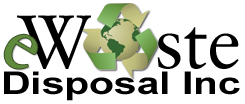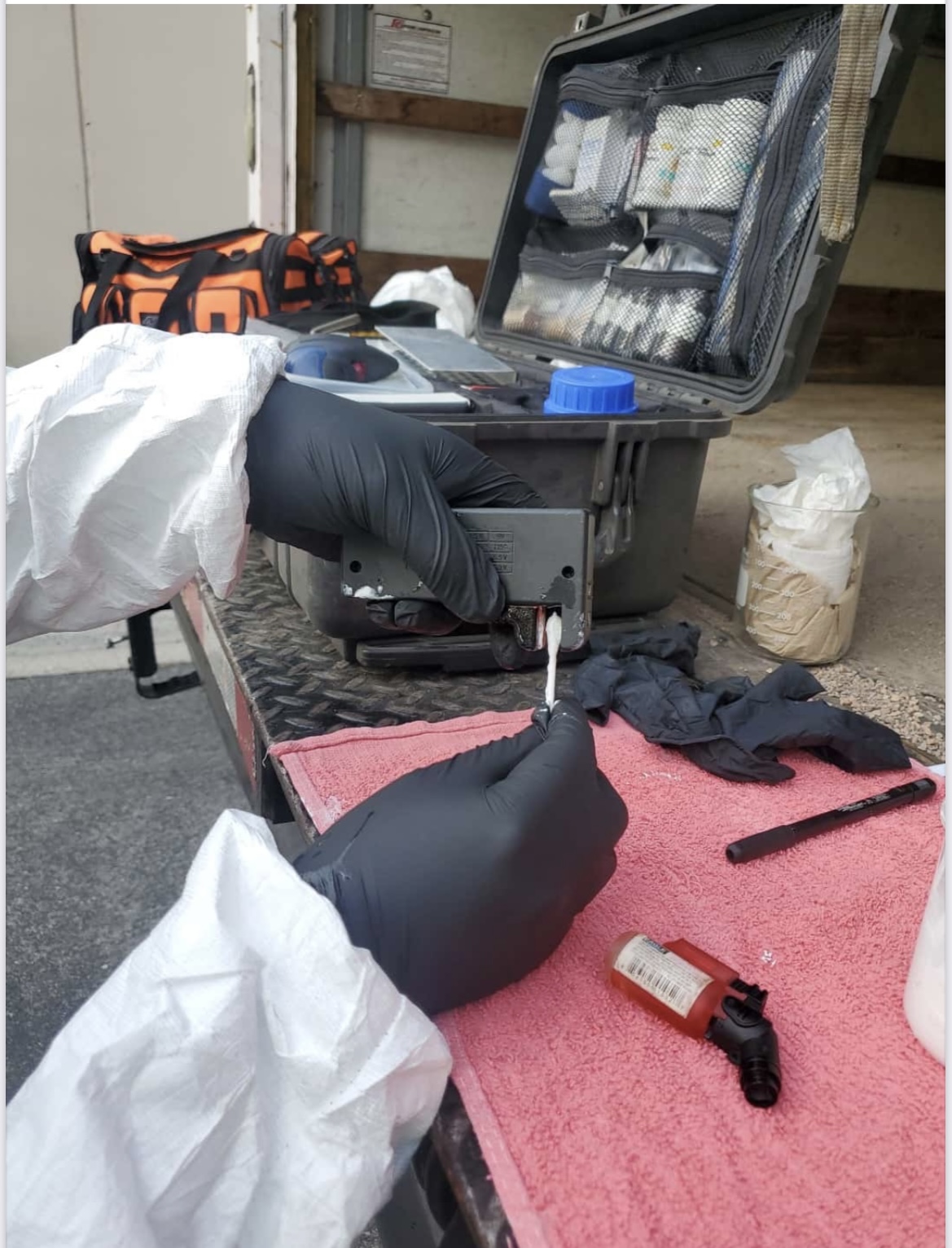
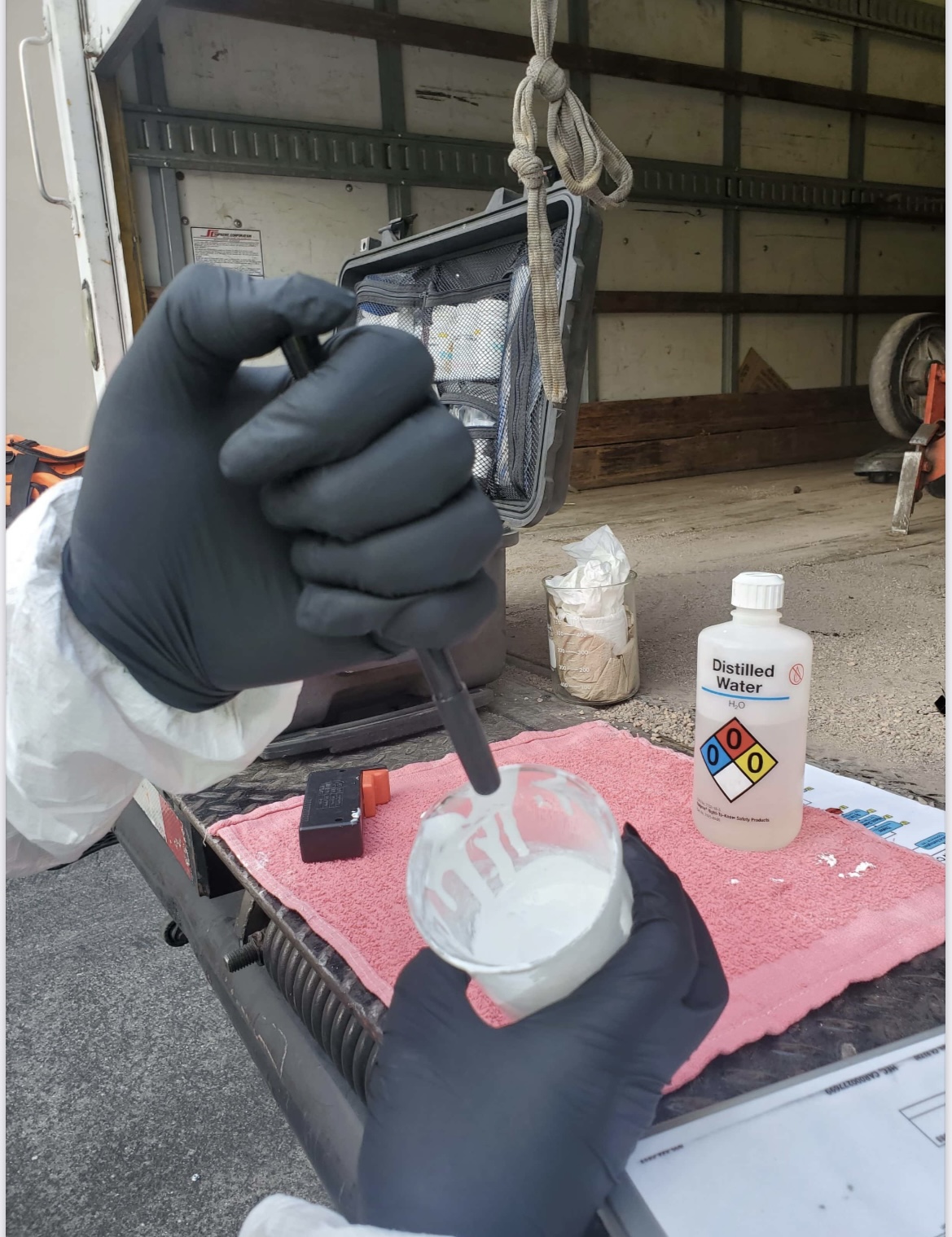
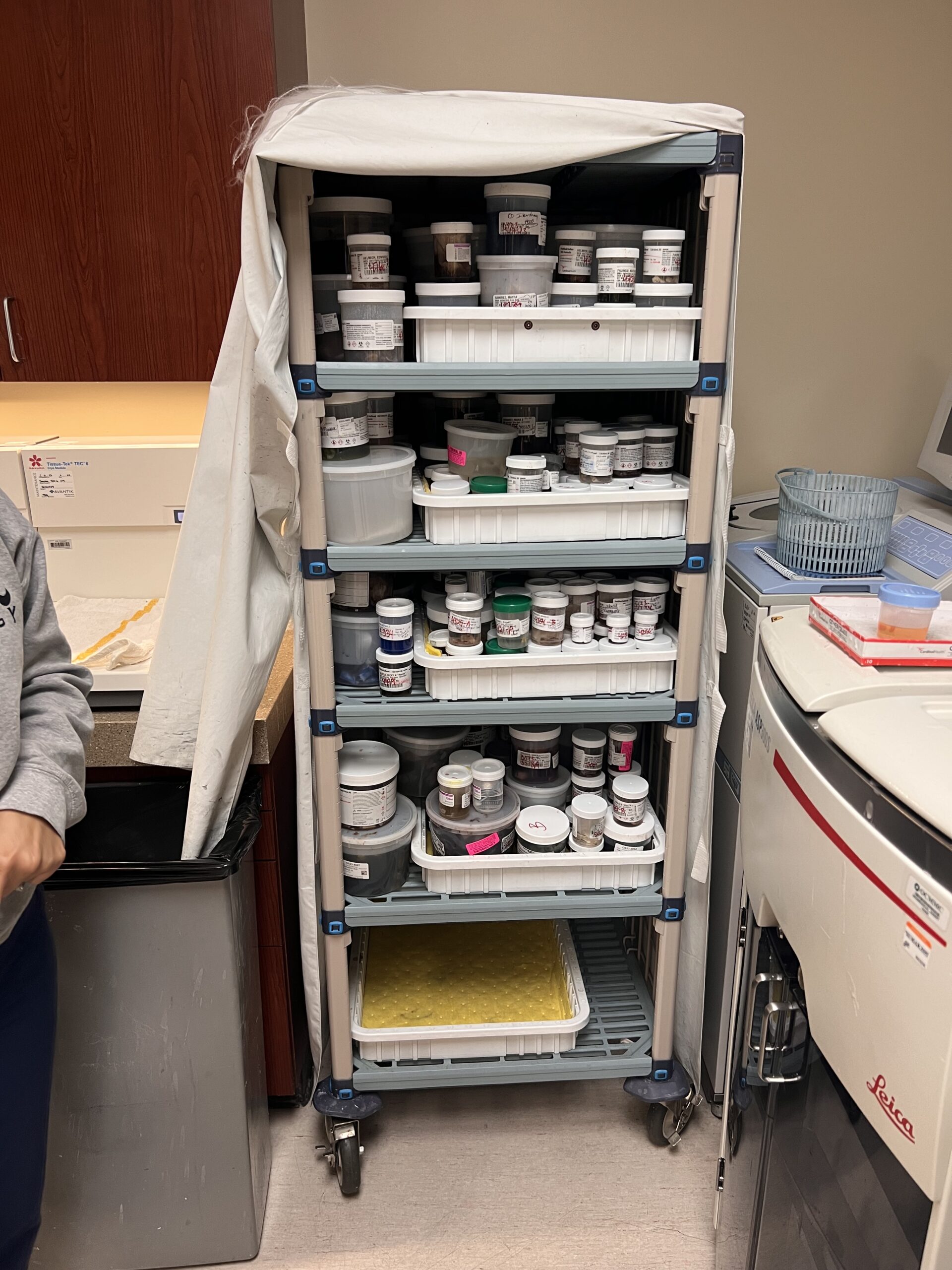
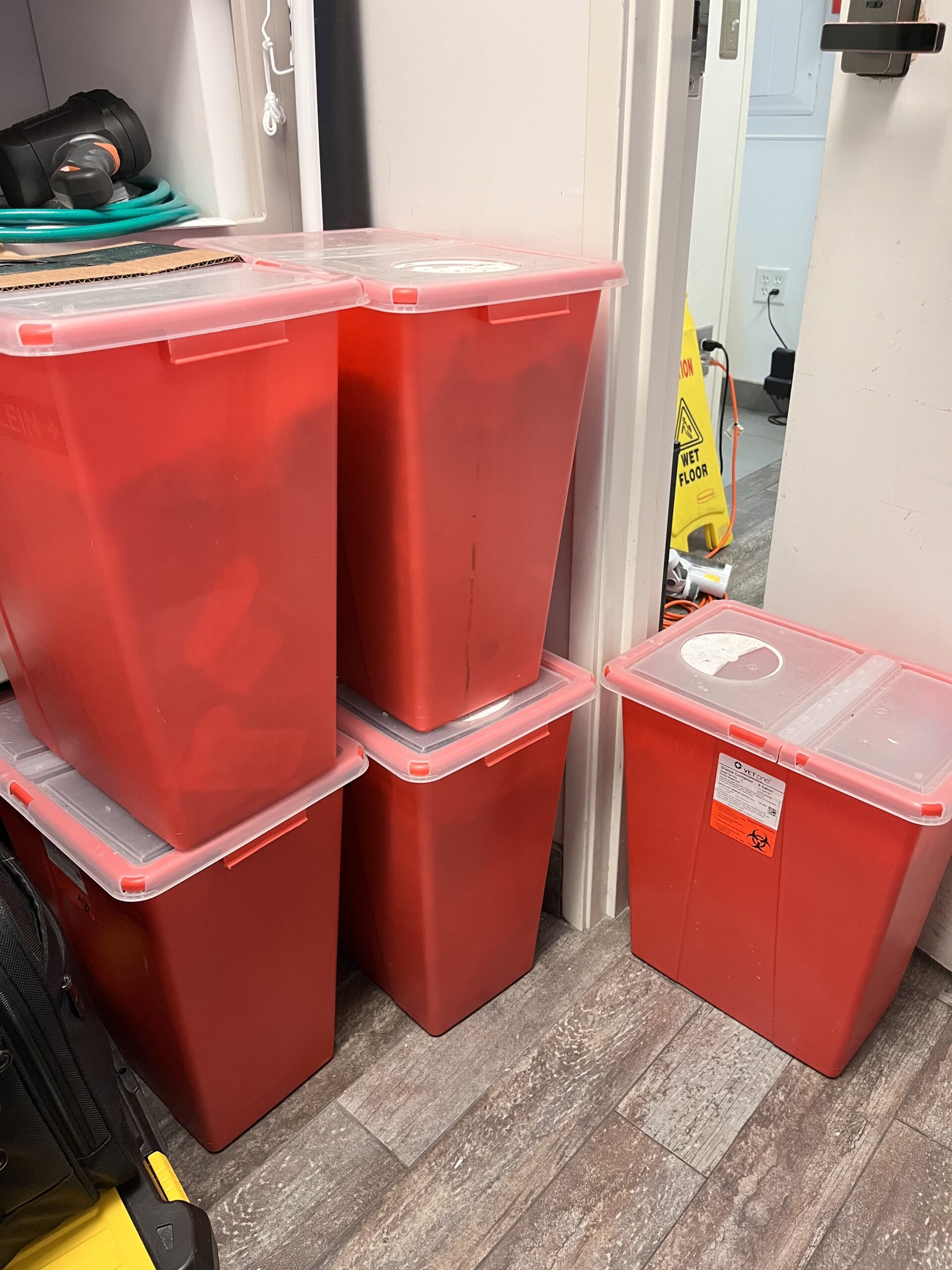
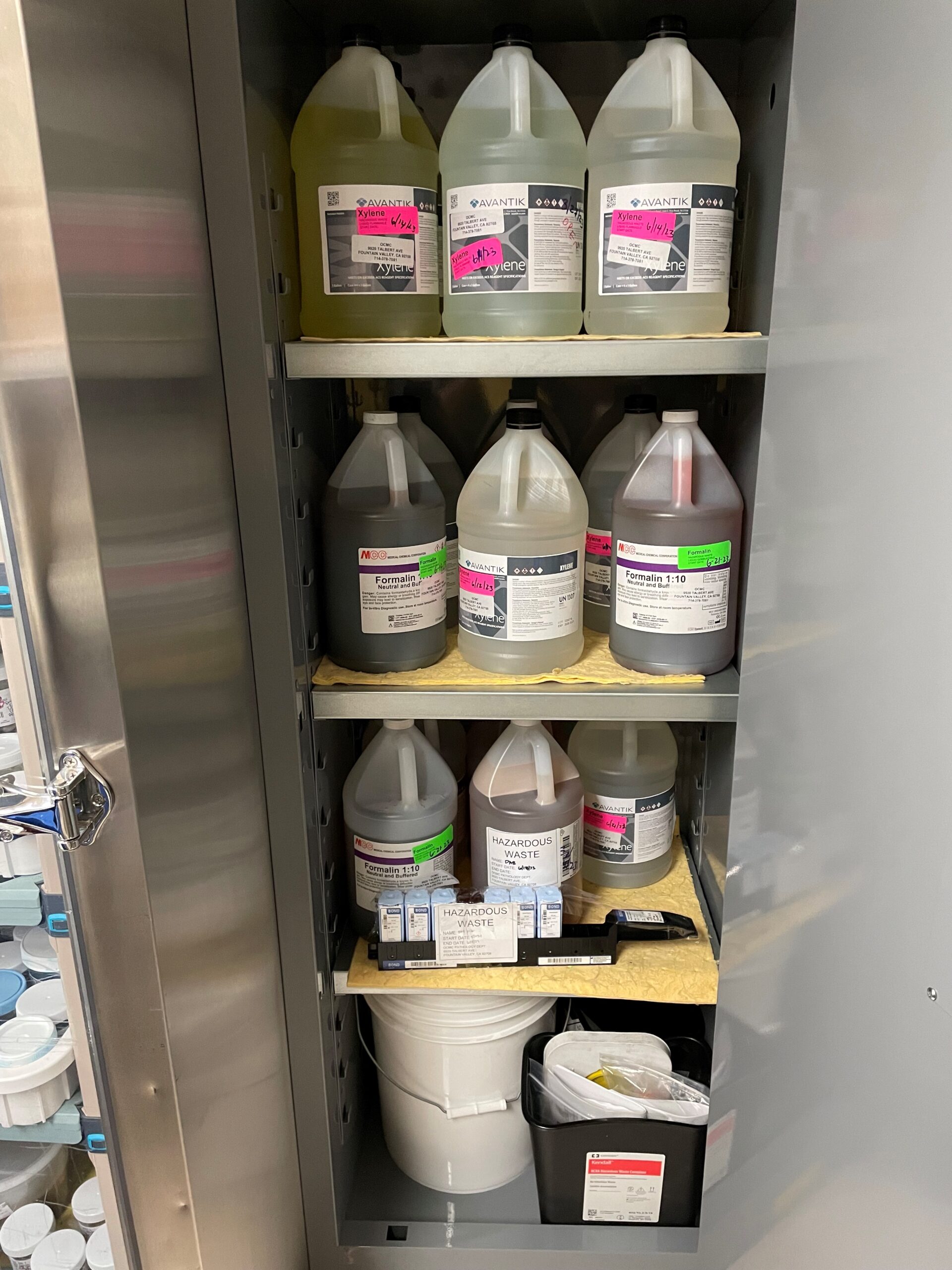
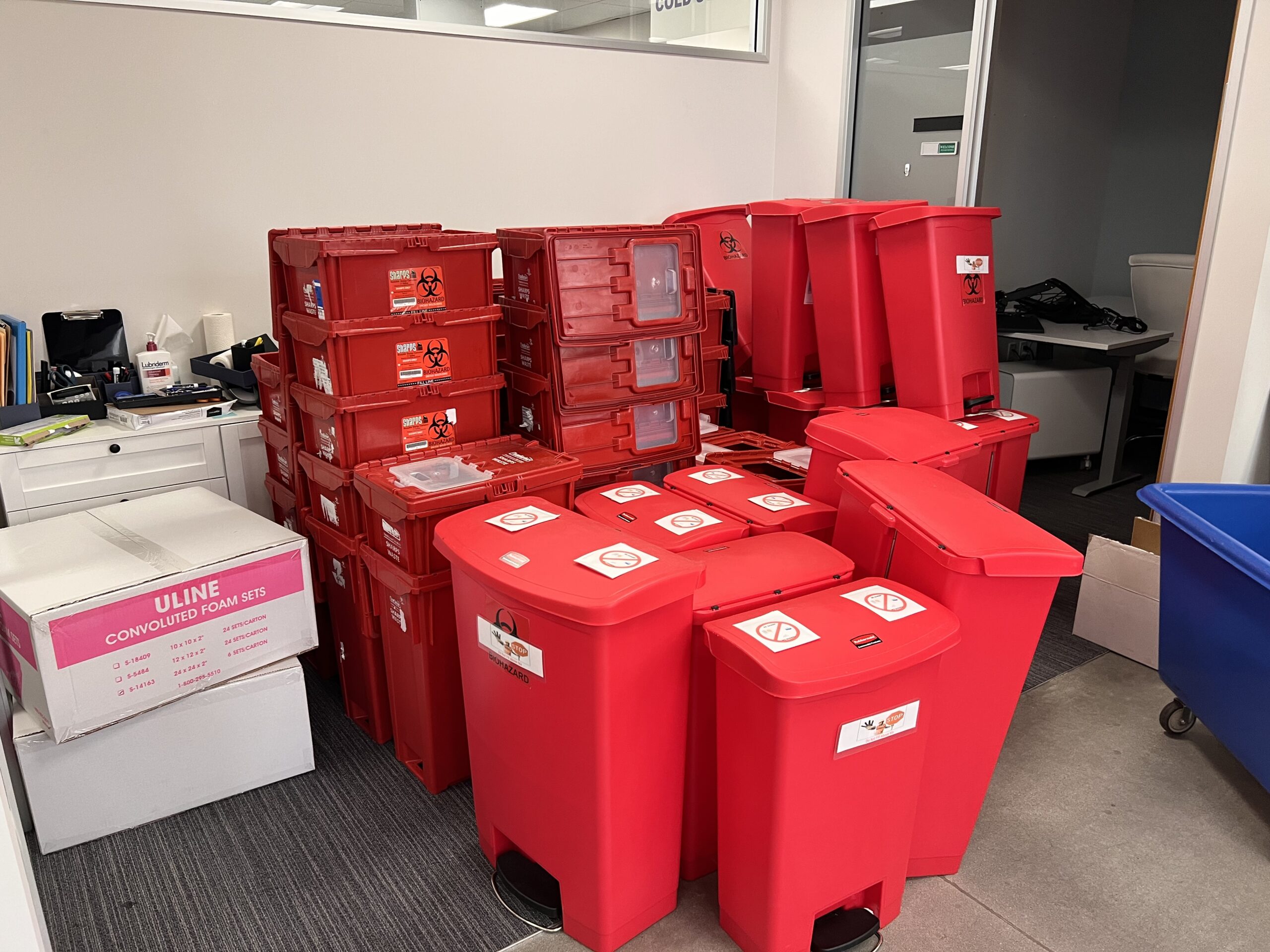
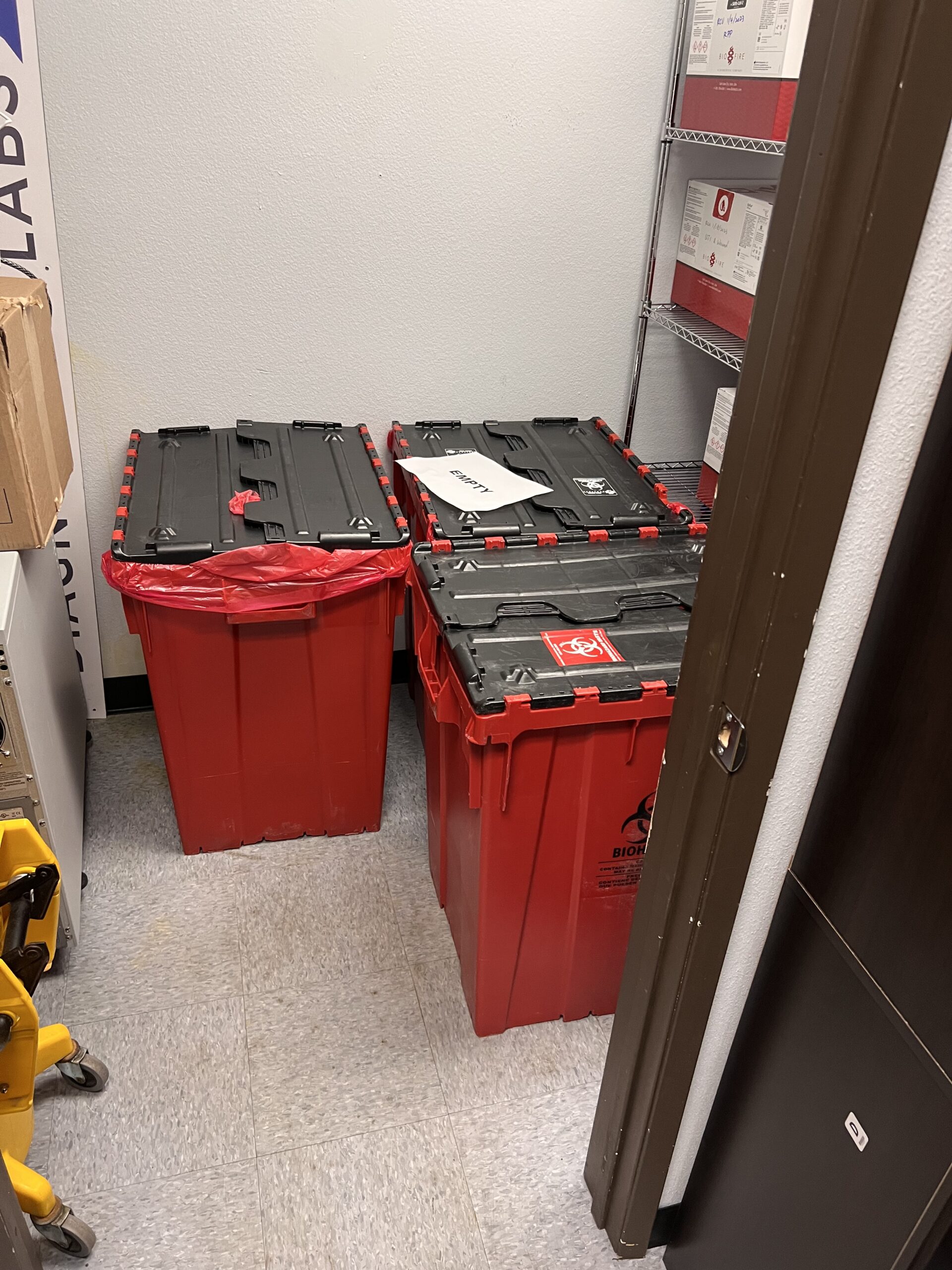
BioHazardous Waste Categories
There are 4 general categories of biohazardous wastes based on the physical form of the waste. Each form must be segregated, identified, decontaminated and disposed of in an appropriate manner for the form in order to minimize occupational exposure and environmental release risks.
Biohazardous waste in any form should not be left unsecured in areas that are accessible to the public (i.e., left in hallways). Only lab personnel should remove biohazardous waste from the lab area and transport it to waste holding areas for final disposal.
1. Solid Biohazardous Waste (non-sharps)
2. Soil Collection, Treatment, and Disposal
3. Liquid Biohazardous Waste
4. Sharps
Disposal for non-sharps and sharps biohazardous waste
Basic procedure:
Collect biowastes at the laboratory level in designated biohazard-labeled cans per current biowaste collection procedures. Segregate serological pipettes and pipette tips to prevent bag punctures or tears. Collect biohazardous sharps in sharps containers as required (see below).
The following are acceptable wastes: stock/propagated cultures of infectious agents; materials that have been used for the collection/processing/storage of human or animal blood or body fluids (including cell lines); recombinant/synthetic nucleic acids; or lab consumables contaminated with any of these materials.
The following are unacceptable wastes: hazardous chemicals (e.g. phenol, chloroform, agarose gels with ethidium bromide, etc.); radioactive wastes; bulk liquid wastes (>25 ml/container); pathological waste such as human/animal bulk blood, tissues, or animal carcasses (contact Biosafety for guidance); human fetal remains, limbs, or cadavers; compressed gas cylinders; loose sharps; controlled substances; etc.
Once the bag is ~2/3 full, close the bag by gathering the top, twisting, and closing with a single overhand knot. This method of closure minimizes the risk of leaks and spills and is required by DOT (since materials will be transported in commerce). Do not tie the bag closed by crossing tabs (‘bunny or dog-eared’ method).
Once the bag is properly closed, double bag it using the same closure technique listed above. The bag can then be deposited directly into a medical waste contractor-provided receptacle, a ~90-gallon bin emblazoned with the company’s name, the universal biohazard symbol, the UN shipping identifier (UN3291) and proper shipping name (Regulated Medical Waste, n.o.s.). Again, autoclaving bags prior to disposal will not be required, except for the following circumstances:
Any infectious agent listed on the DOT Category A Infectious Substances list. For UT, this means that stock or propagated cultures of verotoxigenic E. coli, Shigella dysenteriae, and hepatitis B virus are to be autoclaved for a minimum of 30 minutes. Once treated, allow the bags to cool to room temperature, place in a second bag secured according to the above technique and then discard into a medical waste contractor-provided receptacle.
Any material under federal permit (e.g. USDA APHIS) requiring onsite inactivation in an approved and validated autoclave. These must be autoclaved according to validated parameters. Once treated, allow the bags to cool to room temperature and then discard into a medical waste contractor-provided receptacle or dispose of in the dumpster. (Note: regulated plants/soils that require onsite inactivation should follow the procedure outlined at https://biosafety.utk.edu/biosafety-program/waste/.)
Properly packaged and permanently closed sharps containers may also be discarded into the medical waste contractor receptacles. Sharps containers must be secondarily enclosed in a securely tied (as described above) biohazard bag prior to disposal. Permanently closed sharps containers must be wiped down with a disinfectant prior to removal from the lab for disposal. If there are any liquids present in the biohazardous sharps container, it must be placed in a leak-proof secondary container with a secure lid (and a biohazard label) for transport to the waste collection site or prior to bagging for depositing in the medical waste contractor bins. Disposal of biohazardous sharps containers will be accomplished through a medical waste disposal contractor coordinated through EH&S. Alternatively, sharps containers can be taken to the nearest hazardous chemical waste room (recommended if the sharps containers are very large). The collection of sharps containers in the waste collection rooms will be on the same schedule as chemical waste. Contact EHS for the current chemical waste collection schedule at 865-974-5084. Do not dispose of biohazardous sharps containers in the regular trash, regardless of treatment status.
Be sure that all materials being placed into the medical waste contractor receptacles are double bagged prior to depositing packaged waste from the labs (including sharps containers). Lab wastes are not to be placed in the white ‘Autoclave-treated Wastes’ Brute® bins after the medical waste contractor receptacles are placed. Contact Facilities Services for pick up if white bins pictured below remain in your area after red bins have been delivered.
Autoclave validation program:
Once the Medical waste contractor process is in place, there is no longer a need to do quarterly autoclave validations to satisfy TDEC rules for landfilling treated biohazardous wastes. A subset of volunteers will be asked to continue quarterly validations with biological indicators per USDA permit requirements (as applicable). Autoclaves used to treat Category A Infectious Substances will also be tested at least annually. Otherwise, autoclave testing will be at the discretion of the respective users. EH&S Laboratory Safety Services will continue to supply Class 5 thermal integrator test strips and/or biological indicators upon request.
*Note on autoclaved plant and soil waste:
While these can technically be deposited into medical waste contractor bins once autoclaved, to reduce bin weight (and disposal cost) it is preferred that these are managed according to the SOP posted at https://biosafety.utk.edu/biosafety-program/waste/. Briefly, collect in clear/white/non-biohazard emblazoned bags, autoclave to tested parameters, allow to cool, and remove to the building dumpster.
Do not discard wastes not mentioned here into medical waste contractor containers. If waste is not described here, contact EH&S Laboratory Safety Services for further guidance.
On-site Autoclave Treatment (if required above)
Autoclavable waste bags must be used in biohazardous waste collection containers. Bags must be placed in a secondary container (i.e., a tray with raised sides), which is placed on a cart for movement to the autoclave facilities.
Practice notes on biohazard bags:
Biohazard bags are a one-way means of disposal. Do not “dump” the contents from one biohazard bag into another as this action spreads contamination and increases your exposure to this waste.
Biohazard bags need to be contained at all times during the collection, treatment, and disposal process. Some lab items may puncture bags and this can lead to leaks and spills. Bags awaiting autoclave treatment should be stored in trays, tubs, buckets, etc. (The only exception to this practice is when small quantities of biohazardous wastes that do not contain liquids are collected temporarily in benchtop containers.)
Biohazard bags must not be used for the collection of other hazardous wastes (i.e., ethidium bromide gels).
Biohazardous Waste Bag Leak-Proof Container
Biohazardous waste bags awaiting treatment should always be stored in pans or secondary containment to prevent spills! Ethidium bromide waste is to be collected in a leak-proof container with a lid lined with a sturdy, non-descript bag. The UT Hazardous Waste label should be placed on the storage container as well. No biohazard labels!
Autoclave treatment of this waste must be performed in accordance with the biohazardous waste treatment parameters established for the autoclave. Note: Only personnel who have received training regarding the operation of the autoclave should use this device.
